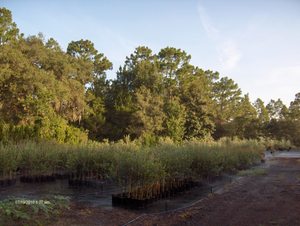 The first thing to determine when purchasing an olive tree is that it is, indeed, the fruiting Mediterranean olive, Olea europaea. Many other plants have the word "olive" in their common names, such as Tea Olive (Osmanthus fragrans), Black Olive (Bucida buceras), and Russian Olive (Elaeagnus angustifolia). There is also the African Olive, known variously as Olea africanus, Olea europaea subspecies africanus and Olea europaea subspecies cuspidata, which makes a tiny fruit and is considered a pest plant in many regions. Olea europaea cultivars can be grafted onto African olive. These trees can branch from below the graft union and produce the undesirable fruits.
The first thing to determine when purchasing an olive tree is that it is, indeed, the fruiting Mediterranean olive, Olea europaea. Many other plants have the word "olive" in their common names, such as Tea Olive (Osmanthus fragrans), Black Olive (Bucida buceras), and Russian Olive (Elaeagnus angustifolia). There is also the African Olive, known variously as Olea africanus, Olea europaea subspecies africanus and Olea europaea subspecies cuspidata, which makes a tiny fruit and is considered a pest plant in many regions. Olea europaea cultivars can be grafted onto African olive. These trees can branch from below the graft union and produce the undesirable fruits.Seedlings of Olea europaea are "unknowns" because their genetic makeup may not be exactly the same as the parent tree. They may or may not bloom even after several years, may make tiny fruit, or may make the best olive ever. Only time will tell. Only asexual reproduction from a known cultivar will produce that same cultivar. Seedlings have shown up on the market, labeled erroneously as the same cultivar as the parent tree.
Seedlings are useful for grafting difficult to root cultivars, but a grafted tree does not make as strong a tree as one growing on its own roots. Avoid grafted trees, especially if the seller cannot positively verify the cultivar or species used as rootstock. The type of rootstock used strongly influences the performance of the scion in many ways, often negatively. Most grafted trees offered in the retail trade are on the cultivar 'Oblonga' rootstock. 'Oblonga' is a non-fruiting cultivar that can carry verticulum wilt without outward signs of this fatal disease. When the pathogen of the rootstock moves upward into the crown of a grafted tree, the entire tree can be killed suddenly. Grafted trees can be identified by a swollen area at the base of the trunk, usually with visible diagonal lines where the scion was joined to the rootstock.
Grafting is neither necessary nor advisable for most cultivars of olive trees. The exceptions are cultivars that are especially difficult to propagate, such as 'Empeltre' or cultivars of low vigor that cannot grow on their own root, such as some large-fruited cultivars from Sicily and southern Italy.
Most olive trees require a pollinator of a different cultivar in order to make fruit. Many people have reported growing an olive tree that does not make fruit. The first thing to determine is whether it bloomed in the spring and did not get pollinated, or did not bloom at all. Trees that bloom and do not make fruit most likely need a pollinator in order to set fruit. Trees that do not bloom are either not old enough to bloom, are non-fruiting cultivars or are seedling trees, as described above. Not just any cultivar of tree will pollinate another, but there are a few that are considered universal pollinators because of their high-quality pollen and long blooming season. The Arbequina olive tree is one such cultivar.
http://www.olivetreegrowers.com/blog.php?view=detail&id=71
No comments:
Post a Comment